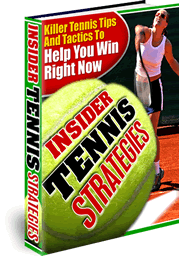 Last week, I played in the provincial doubles in my age group.
Last week, I played in the provincial doubles in my age group.I'll be adding an analysis of my matches over the next few weeks, but to cut to the chase --we lost 6-3 in the third to the provincial champions.
It's the second year in a row that my doubles partner and I have lost 6-3 in the third set, to the eventual champions. We like to think we're getting closer each year to winning the title. We've identified a number of areas that can be improved, and I'll be discussing those over the next few weeks.
But, there's another very real benefit to playing in the provincial championships.
I get to see the best players in the province in all the different age groups, and its an opportunity to learn from a lot of superb players, many of whom have represented Canada internationally.
The finals of the men's 50's showcased two excellent players. Both were extremely quick and talented, and took most balls, on both the backhand and forehand, on the rise.
The winner has an exquisite drop shot and often used it to end points. For example, he would get a short ball that would seem to cry out for a deep approach shot, and he would feather a gorgeous drop shot winner.
Of course, his technique and disguise were superb. From a purely visual point of view, he seemed to be carving the shot with a long swing instead of bunting the ball as a lot of club players do.
Since then, I've been practicing this shot off both the forehand and the backhand.
I feel that one of the keys is to keep very loose and soft hand,s and then gently carve the ball with a fluid swing that is shorter than a ground stroke, but longer than a bunt.
Here are a couple of links that I've found for you on the drop shot.
The first highlights coaching by Gilad Bloom, a former pro player, who focuses on disguising the drop shot.
Just click on the link and then scroll to the video in the middle of the page on the right side.
Tennis Drill To Learn Disguise On The Drop Shot
Here is another drill by top teaching pro Brent Abel on how to practice the short game. The key here is to use the continental ( volley grip ) and not to use your topspin grip.
Short Court Drop Shot Tennis Drill
And, finally a clip of a somewhat talented, and well-known pro, hitting a drop shot winner from the baseline.
I'm being facetious because the clip is of the great Roger Federer. Watch though, the position of Fed's opponent when he hits the backhand dropper. The opponent is in the deep backhand corner and the front court, up the line dropper, is very far from him.
Federer Drop Shot
Until next time,
Glenn Sheiner M.D. - author of Insider Tennis Strategies Champion Seniors Tennis Players Using Drop Shots guaranteed to make you a smarter tennis player and take your tennis to the next level. Also, check out the world's top tennis humor screensaver
Tennis Cartoon Screensaver. You can download a trial version for FREE.
Technorati Tags Tennis
